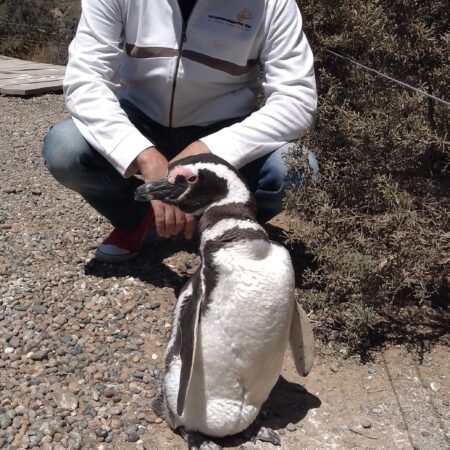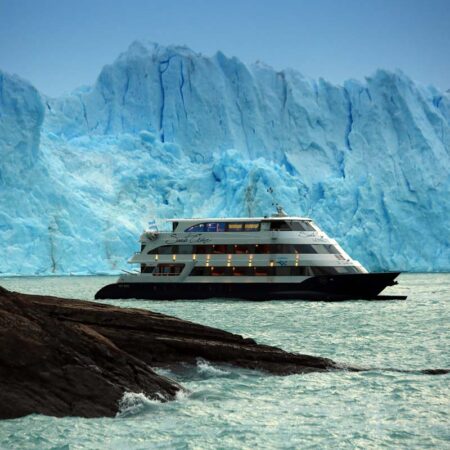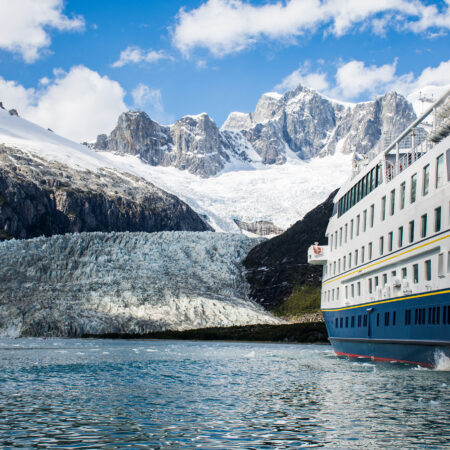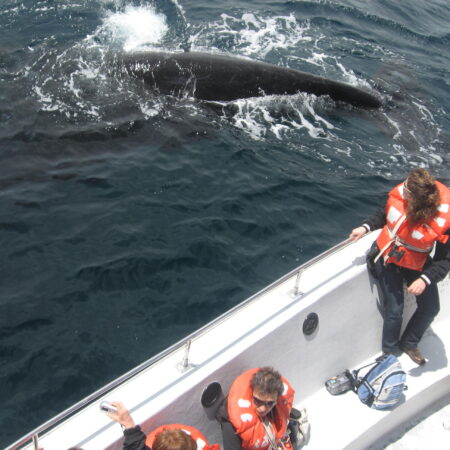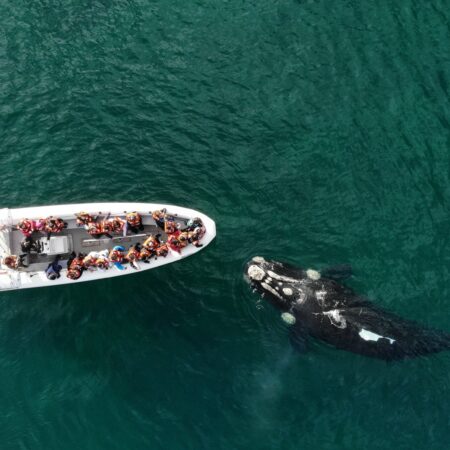In these pages we will revisit the unbelievable story of the Yámana aborigine Jemmy Button, who was kidnapped in his town of Cape Horn by the officer of the British Royal Navy, Robert Fitz Roy. Together with other three members of his ethnic group, he was taken to London, where he would be educated in the Victorian way with the intention of turning him into an agent in charge of spreading “civilization” in the New World. This is the story of an overseas adventure in which Charles Darwin himself was involved, and which was crucial for the creation of his famous “Theory of Evolution”.
1 – The Kidnapping
 The ship crashes into the waves of the South Atlantic. The coasts of “Terra Incognita Australis” are already at sight. The aborigines’ bonfires, which would later serve as inspiration for the name by which Tierra del Fuego is currently known, have not been lit yet.
The ship crashes into the waves of the South Atlantic. The coasts of “Terra Incognita Australis” are already at sight. The aborigines’ bonfires, which would later serve as inspiration for the name by which Tierra del Fuego is currently known, have not been lit yet.
The HMS Beagle throws its anchor near the coast of Wulaia (name given by the natives to their land), and Captain Robert Fitz Roy, to whom the command of the brigantine had been entrusted by the Royal Navy after the suicide of his predecessor, commander Pringle Stokes, wakes up from his rest and joyfully contemplates the sight of his accomplished objective. He can now start his mission of charting the island and studying its geography.
 A group of Yámana canoes sails out to meet the Beagle. One of the boats carries Orundellico among its crew, a teenager of about 14 years. This young man would later be known as Jemmy Button, after the captain took a mother-of-pearl-made button off his coat and gave it to him as payment in return for keeping the Fueguino (native of Tierra del Fuego) on board. The Captain is enraged because
A group of Yámana canoes sails out to meet the Beagle. One of the boats carries Orundellico among its crew, a teenager of about 14 years. This young man would later be known as Jemmy Button, after the captain took a mother-of-pearl-made button off his coat and gave it to him as payment in return for keeping the Fueguino (native of Tierra del Fuego) on board. The Captain is enraged because  one of the ship’s whalers has been stolen, and he is willing to make an exchange to recover it. The aborigines do not seem to show signs of the whaler, and Jemmy ends up as a hostage on the Beagle.
one of the ship’s whalers has been stolen, and he is willing to make an exchange to recover it. The aborigines do not seem to show signs of the whaler, and Jemmy ends up as a hostage on the Beagle.
This is how the story of Jemmy Button begins, for whom 1831 meant the opening of a new chapter in his life and would lead him far away from the origins of his people, unknowingly turning him into an officer of the British Empire.
2 – Old World, New Life
Jemmy is not alone on the Beagle. The loot of the British mission is completed with some other three Yámanas: Fuegia Basket, 9 years old, York Minster, 25 years old, and Boat Memory, 19 years old. At  first, this company, however, is not comforting to Jemmy, because despite sharing their ethnic group, they belong to an enemy tribe, so he is subject to hostility as soon as he is captured on the Beagle.
first, this company, however, is not comforting to Jemmy, because despite sharing their ethnic group, they belong to an enemy tribe, so he is subject to hostility as soon as he is captured on the Beagle.
The aborigine group’s fate would be dictated by the Captain’s intentions: submitting them to a perverse experiment by which they would be educated according to Victorian “civility” principles. They would be taken to England, dressed in nineteenth-century British costumes, converted to Christianity, instructed in the English language typical of a lord, and taught the manners and customs of upper London bourgeoisie.
It is clear that the Captain would not admit the kidnapping; for this reason, he would say that the relocation was justified under the “certainty that, in the long term, the benefits of knowing the British customs and language would compensate for the temporary separation from their country”.
 In fact, the British Crown, knowing the Captain’s actions, already had specific plans for them: they would become interpreters and fulfill a civilizing task in the lands of South America. The actual objective consisted in evangelizing the Yámanas, settling domain in the New World, and ensuring the path to the Pacific through the Straits of Magellan and the later called Beagle Channel.
In fact, the British Crown, knowing the Captain’s actions, already had specific plans for them: they would become interpreters and fulfill a civilizing task in the lands of South America. The actual objective consisted in evangelizing the Yámanas, settling domain in the New World, and ensuring the path to the Pacific through the Straits of Magellan and the later called Beagle Channel.
 The spread of Illustration values among “the savages” was related to the prejudices prevailing in 18th Century Europe, according to which the aborigine lifestyle only depicted the sad testimony of the primitive, the decadent, and the abject, withdrawn from the progress and spiritual integrity ideals on which the Western Christian culture was based.
The spread of Illustration values among “the savages” was related to the prejudices prevailing in 18th Century Europe, according to which the aborigine lifestyle only depicted the sad testimony of the primitive, the decadent, and the abject, withdrawn from the progress and spiritual integrity ideals on which the Western Christian culture was based.
Jemmy soon showed evident signs of adaptation. He was the smartest one in the group of Fueguinos, and he rapidly took in the teachings of his instructors. He gained the acknowledgement of the rest of the ship crew members, with whom he ended up building a close bond.

Jemmy and the rest of the Yámanas were bewildered by the clothes and it took them some time to understand their usefulness, as they were used to being naked in their lands. They were also obsessed by the food storage room; food was scarce in Wulaia and stocking up demanded great effort. They soon understood that by obeying their orders, they obtained food as a reward.
Once in England, the problems of the experiment would appear, since Boat Memory would die from measles as soon as he reached Plymouth.

Jemmy and the other two were enrolled in a Catholic Church farm-school in the outskirts of London. In the case of Jemmy and Fuegia Basket, the learning and integration showed encouraging signs (most of the public opinion referred to them as “good savages”), but York Minster, the older one, was not in the best mood, perhaps as a result of having left his wife and kids behind in his homeland.

The assimilatory progresses made by the Yámanas led to an audience, together with the Captain, with King William IV and Queen Adelaide in St. James’s Palace, something unusual at the time. The interview was a success. The anthropological interest actually concealed the imperialistic ends pursued by the United Kingdom.
3 – Beagle’s Return with an Unexpected Companion
After 15 months, the Captain, who was aware of the repeated criticisms to his project by the English press and the public opinion in general, considered that it was time to return the Fueguinos to their land and put the experiment into practice.
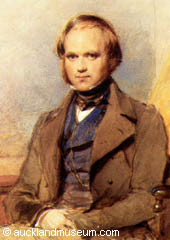 The Captain had a hot temper and caustic personality. Suicidal ideas hovered in his mind, since he was aware of his family background and, what is more, his predecessor in command of the Beagle had taken his own life. This is why he needed a nice travel companion that would help him to drive away those ghosts.
The Captain had a hot temper and caustic personality. Suicidal ideas hovered in his mind, since he was aware of his family background and, what is more, his predecessor in command of the Beagle had taken his own life. This is why he needed a nice travel companion that would help him to drive away those ghosts.
John Stevens Henlow, a Botany Professor at Cambridge, recommended a 22 year-old naturalist, who had never before crossed the ocean, for this position.
A young Charles Darwin, who had not had a really successful academic performance and who still believed in the divine creation according to the Bible (he was a 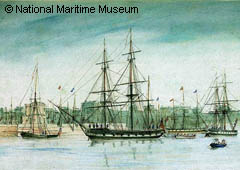 priest apprentice), left in 1834 from the port of Plymouth. He started, with the Captain and the three aborigines, what would eventually become a paradigmatic journey in human history.
priest apprentice), left in 1834 from the port of Plymouth. He started, with the Captain and the three aborigines, what would eventually become a paradigmatic journey in human history.
Upon reaching the bay of Wulaia, Jemmy and the other Yámanas were set free, with some items they had brought from England but which would be useless in their villages. The Captain and Darwin continued with the journey, traveling along several places of South America. Fitz Roy became the first captain to go into the Beagle Channel. Among other places, in 1834 and after sailing up  the Santa Cruz River, they reached the Cerro Chaltén area, which in 1877 the Expert Francisco Moreno would name after the Captain, in recognition of his important pioneer activity in Patagonia.
the Santa Cruz River, they reached the Cerro Chaltén area, which in 1877 the Expert Francisco Moreno would name after the Captain, in recognition of his important pioneer activity in Patagonia.
The Captain looked forward to seeing the fruits of his experiment, but Darwin discouraged him and minimized the importance of the matter. A letter to his sister, Susan, reveals his belief in the reversibility of the education: “It will be very interesting and -I’m afraid- also painful to see poor Jemmy Button and the others. I guess we will find them naked and half starving, or otherwise devoured in the last winter”.
He was interested in specimens of living organisms and fossils he found in the expeditions. These observations would be the basis for the renowned Theory of the Origin of Species, which would be a benchmark in the history of Modern Science.
Despite Darwin’s little enthusiasm in the experiment, the Captain would not give up and decided to go back for Jemmy.
4 – The Experiment Fails
The Captain is nervous, walks from side to side of the deck. The village where he had picked up Jemmy had been abandoned, the huts are 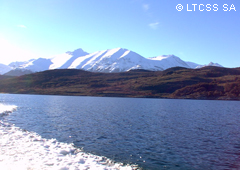 empty. For him, Tierra del Fuego represents a sepulcher filled with dead people.
empty. For him, Tierra del Fuego represents a sepulcher filled with dead people.
It is already night. A group of canoes approaches the Beagle. Disappointment cannot be greater. There is Jemmy, showing an almost complete nakedness but for a rotten cloth hanging from his groin. His hair is long and dirty; his body is undernourished; his skin, abandoned; his eyes, worn out. Nothing is left of the gentleman who used to impress London’s high society.
Half an hour later, he is sitting at the Captain’s table, holding the cutlery so as not to offend his host, though he cannot hide a strangeness gesture, the same that showed in that first overseas trip.
The conversation between the Captain and Jemmy must have been something like this:
– “What has happened, Jemmy?” Is it that you don’t remember anything of what happened these last years?”
-“I’m sorry. I’d rather not remember. Besides, I’m really well just like this.”
-“But, you look sick! You need to eat.”
-“I’m fine, Captain, I appreciate your concerns, but I’m really fine.”
-“Are you sure you don’t want to travel with us? We’ll have a great time together and we’ll keep you in good shape.”
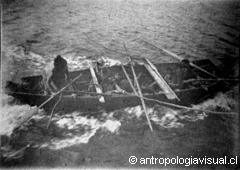 But Jemmy has no intention of moving away from his place or looking alike another culture. This time no one forces him. He reaches out his hand to the Captain with enough pride and assurance, and comes back to his canoe. Lit by a torch, it stirs up the waters with the glow of the living fire of the end of the world.
But Jemmy has no intention of moving away from his place or looking alike another culture. This time no one forces him. He reaches out his hand to the Captain with enough pride and assurance, and comes back to his canoe. Lit by a torch, it stirs up the waters with the glow of the living fire of the end of the world.
Jemmy Button was tried and acquitted in Port Stanley, in the Malvinas Islands, after having been accused of slaughtering missioners in one of the Beagle Channel islands. He died in Cape Horn due to a smallpox epidemic that dramatically reduced the Yámana population by half.




